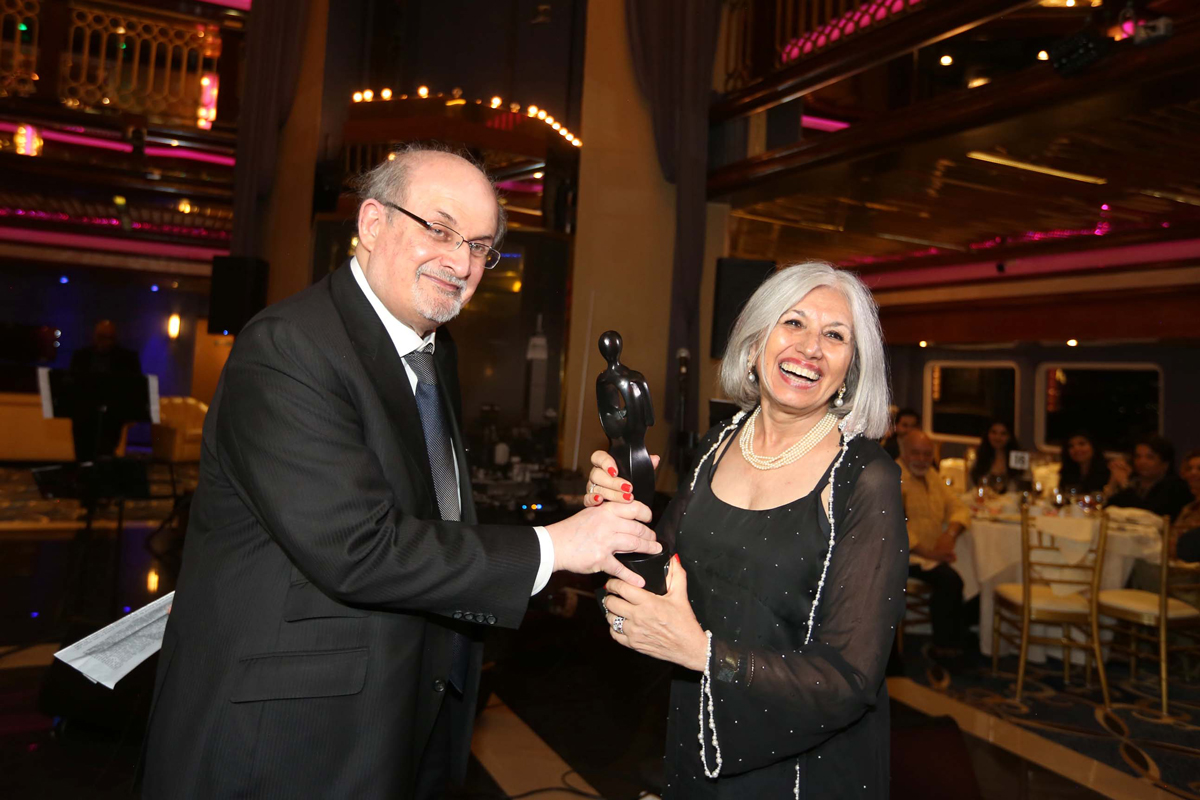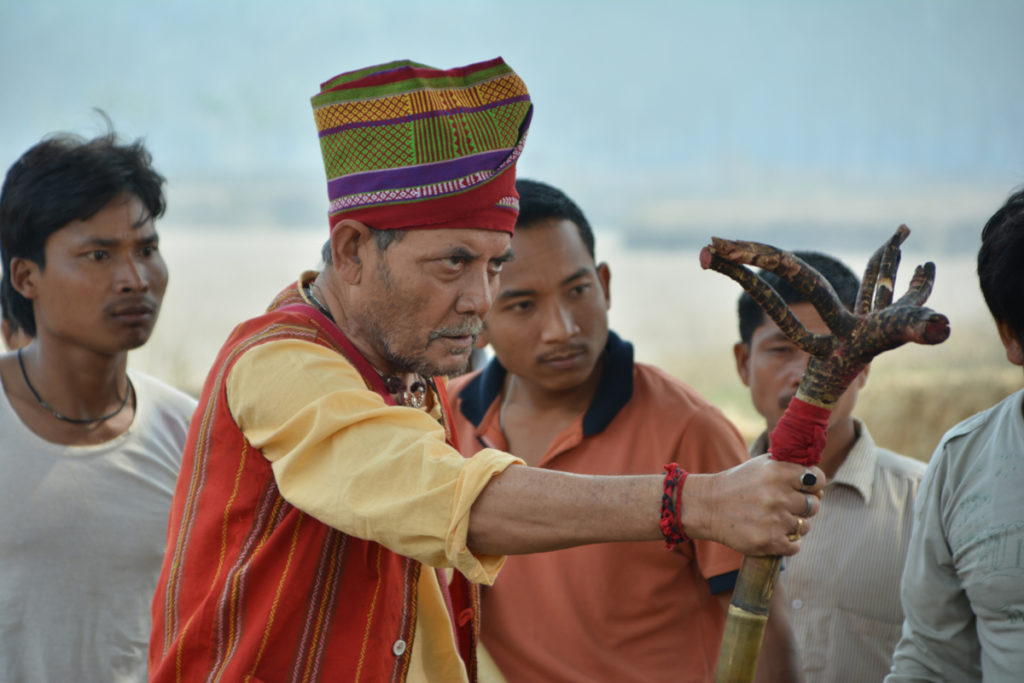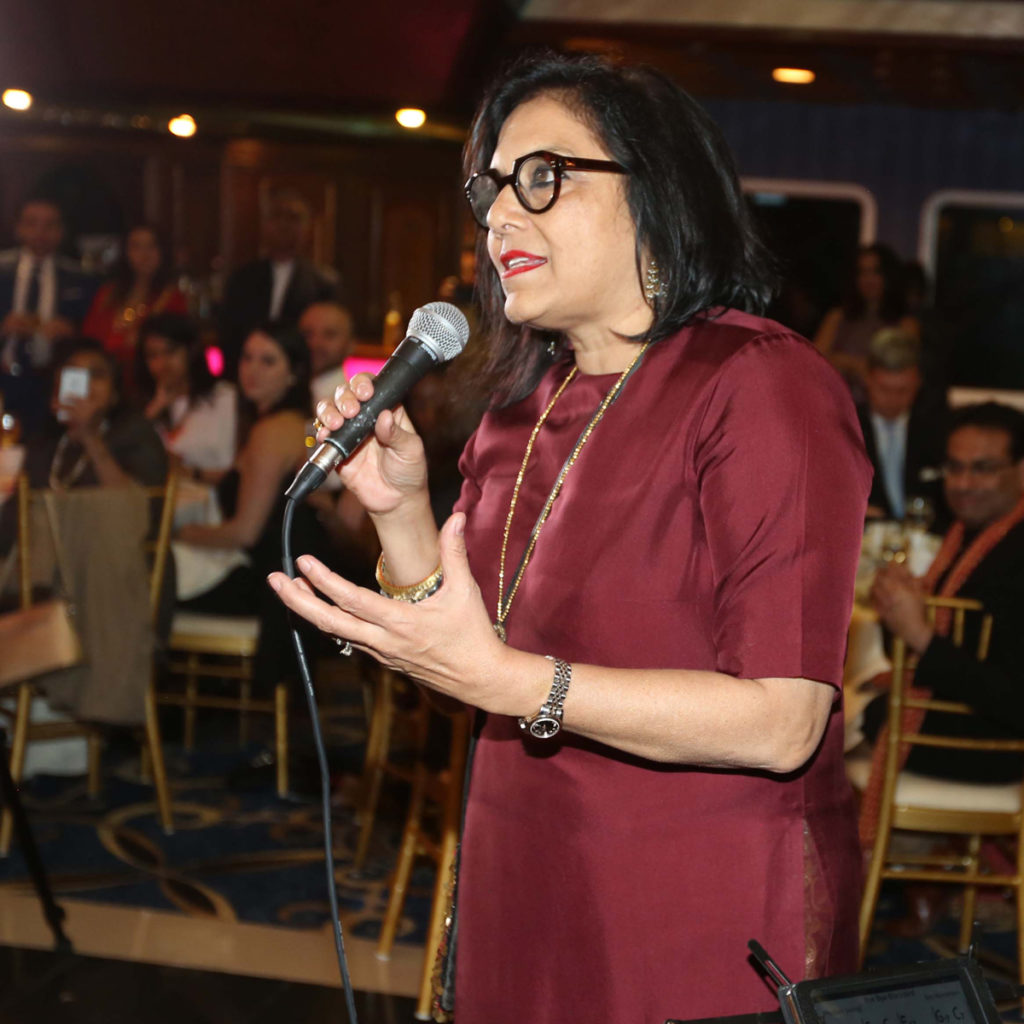18th Annual NEW YORK INDIAN FILM FESTIVAL
May 7-12, 2018
REVIEWS
|
villagevoice.com
A Closer Look at the New York Indian Film Festival, the City’s Underexposed Cultural Handshake
Siddhant Adlakha, May 9, 2018
|
| |
 |
| |
Aroon Shivdasani immigrated to North America in 1970 with her husband, whom she met at St. Xavier’s College in Mumbai. She moved from Toronto to Virginia to New Rochelle before settling in New York City, where she founded, in 1998, the Indo-American Arts Council (IAAC), a small organization run out of her Upper East Side residence. Two decades later and eighteen years into the IAAC’s flagship New York Indian Film Festival (NYIFF), Aroon is set to retire. And while there’s been no announcement yet of how exactly the council or the festival might continue in her absence, Aroon’s work (and that of her co-founders and numerous volunteers) has clearly mattered a great deal. As the conversation on South Asian representation re-enters the spotlight thanks to The Simpsons, it’s become increasingly clear that Aroon and the IAAC have provided an alternative platform born of necessity. “India had amazing musicians,” Aroon recalls of her move to the U.S. “But you heard about all the Western musicians at Carnegie Hall. It’s not that we didn’t have any. They just weren’t visible.”
The Village East Cinema on East 12th Street plays host to the 2018 edition of the NYIFF all this week. It boasts a lineup of 78 films from all over the Indian subcontinent (including shorts and features from India, Pakistan, Bangladesh, and Sri Lanka), as well as from the South Asian diaspora in the Western world. The latter component — films by immigrant and first-generation filmmakers living in Europe and North America — formed the core mission statement of the very first NYFF in 2001, held at the AMC in Lincoln Center. A small, one-weekend affair, it played host to not only the North American premiere of Mira Nair’s Monsoon Wedding, but a screening of the 1965 Merchant Ivory production Shakespeare Wallah. This year, a remastered print of Shakespeare Wallah makes its way back to the festival alongside Merchant Ivory films like Autobiography of a Princess and Heat and Dust. On the one hand, the Merchant Ivory spotlight nods to James Ivory’s recent Oscar win for Call Me by Your Name, but on the other, it also pays tribute to the recently departed Sixties and Seventies Bollywood mainstay Shashi Kapoor, star of two of the three Merchant Ivory films on display and a key figure in bridging the cultural gap between East and West.
Paying tribute is a key aspect of the NYIFF celebrations. Actress Madhur Jaffrey, star of all three featured Merchant Ivory films, was present at the council’s opening-night gala this past Sunday (alongside such prominent South Asian voices as Mira Nair and Salman Rushdie). Festival programmers also managed to add the New York–set English Vinglish (2012) to the lineup after the death of Indian actress Sridevi in February. Just as Shashi Kapoor helped facilitate Merchant Ivory’s artistic handshake between the West and the Indian subcontinent, Sridevi’s repertoire of nearly 300 films in various Indian languages (Hindi, Tamil, Telugu, Kannada, Malayalam) across several of the nation’s regional film industries represents a similar crossing of cultural boundaries on a national scale. As the years went on, the NYIFF has become as much about bringing subcontinental artists to the West as bringing the subcontinent to itself.
Aasif Mandvi (The Daily Show, Netflix’s A Series of Unfortunate Events), one of the special guests at NYIFF 2018, sees this year’s festival as an especially vital opportunity for intracultural conversations. “We have all these South Asian artists. We have writers, journalists, and filmmakers. If we can cross-pollinate on that level, there’s a lot of power in our community.” With there being no clear indication just yet of the IAAC’s future after Shivdasani steps down, Mandvi hopes the South Asian–American community at large will finally recognize the importance of the arts and help continue the IAAC’s mission. “Who’s going to take over the mantle of this organization and take it to the next level? There are South Asian philanthropists out there, you know who you are, you’ve got a billion dollars in the bank. Put some of that towards arts and film. Do that, help the community be more of a presence. Something like this should be national.”
|
 |
| |
“Many different accents. Many different visages. That’s who we are,” says Aroon, who pursues her artistic patronage with a singular intensity. “We’re not all the same, but we feel the same. There’s a unity there, but at the same time there’s great diversity.” This year’s lineup seems to back up her statement. It’s one of the first NYIFF slates to feature a film from Assam — Utpal Borpujari’s Ishu — the eastern Indian state bordering Bangladesh and Bhutan. Highlighting diversity of culture has formed the lifeblood of the IAAC, from its theater workshops to its museum installations along the East Coast. As with any devotion to diversity of ethnicity, diversity of perspective has also been a key feature of the IAAC — even to the point of drawing ire. In the fall of 1999, a mere year into its existence, the council organized a four-day series of events entitled “Perspectives of Gandhi,” featuring various works on the life of the Mahatma. Among them was the Pradeep Dalvi play Nathuram Godse: An Experience, an occasionally banned and widely protested attempt to humanize Gandhi’s assassin. In 2002, the council became the focus of protest from fundamentalist groups because of its staged reading of Riot, the Shashi Tharoor novel, both for its subject matter — India’s historically frayed communal relations — as well as for its casting of Shabana Azmi, a Muslim actress, as the voice of a Hindu fundamentalist. The purpose of the reading, of course, was to foster discussion on the very religious tensions that had led to these protests in the first place.
Salman Rushdie, author of The Satanic Verses, is no stranger to extreme responses to complicated art. He was placed under police protection in Britain after a fatwa was issued against him for Verses, around the time the book was banned in several countries including India, Sri Lanka, and Pakistan. He also happens to be one of the festival’s longtime attendees, as well as one of its 2004 honorees (alongside Mira Nair, Shabana Azmi, Ismail Merchant) for his support of South Asian arts in the Western world. “No single thing solves the problem,” he says, returning to the fest once again in 2018. “But I think what Aroon Shivdasani has done is to highlight such a wide range of activity in so many art forms, whether theater or film or dance or literature.” Rushdie has lived in New York since the turn of the century, in which time he’s seen the platform for South Asian art grow under the tutelage and sponsorship of the IAAC. “It’s been very valuable. I came to live here just about the time that [Aroon] was starting, and I can see that in that time that South Asian culture has become so much more visible in so many ways. And I think she’s been a significant part of that.”
The council’s approach to under-discussed issues through art expanded over the years. As the NYIFF grew beyond its diaspora-specific focus, it began incorporating films from the subcontinent that were unlikely to get wide releases at home or in Western cinemas. In 2014, Nagraj Manjule’s Fandry, a story of romance across caste lines, picked up the award for best director. In 2017, the fest opened with Alankrita Shrivastava’s paean to Indian womanhood and sexual freedom, Lipstick Under My Burkha, a film initially banned by the Indian censor board. In 2018, the NYIFF continues to be a platform for complicated work. Closing-night selection Omerta (which also ran into trouble with the Indian censors) features real-life terrorist Ahmed Omar Saeed Sheikh as its protagonist, while opening-night film Nude, Ravi Jadhav’s Marathi-language drama, tells a tale of a woman who turns to the oft-maligned profession of nude modeling for art students.
Art about art happens to be one of the 2018 fest’s emerging themes. (Another selection, CRD, tells a tale of rebellious actors turning against their tutor.) And by seeming coincidence, per festival director Aseem Chhabra, a number of South Asian takes on Shakespeare have made their way into the lineup as well. Between the Shakespeare Wallah revival, Bornila Chatterjee’s The Hungry (a British-Indian take on Titus Andronicus), and Abhaya Simha’s Paddayi (Macbeth set in a tiny fishing village in South India), the roster finds itself thematically in tune with the IAAC’s effort to reclaim Western spaces and artistic traditions through South Asian lenses. This Shakespearean trend is no surprise, mind you, given that the 2015 edition of the festival was the first time Bollywood director Vishal Bhardwaj’s Shakespeare trilogy — Maqbool (Macbeth), Omkara (Othello), and Haider (Hamlet) — was programmed back-to-back.
Per Chhabra, another emergent trend this year has been the number of LGBTQ-centric films submitted for consideration. In addition to an entire “LGBTQ Stories” program of shorts on Wednesday night, the 2018 fest also includes features telling a vast array of queer stories from across South Asian cultures. Arshad Khan’s personal documentary Abu chronicles both his family’s Westward migration from Pakistan as well as his coming-out in an immigrant culture already steeped in duality. Canadian comedy Venus follows a transgender Punjabi woman meeting a white teenage son she conceived when she identified as a man. Perhaps the most potent cross-section of this year’s themes is the world premiere of Bird of Dusk, a documentary about iconic Bengali filmmaker Rituparno Ghosh. Ghosh, winner of a staggering twelve National Film Awards over a 21-year career, was an openly gay LGBTQ activist who died in 2013; one of his more mainstream successes was The Last Lear (2007), an English-language film about a retired Shakespearean actor played by Bollywood legend Amitabh Bachchan. Whether shorts or features, fiction or documentary, the NYIFF is becoming a more inclusive and accepting space for South Asian queer cinema at a time when such a drive seems most urgent. (The Indian Supreme Court’s ruling on the decriminalization of homosexuality is expected soon.)
|
 |
| |
Having premiered her debut film at the very first NYIFF, Nair has returned to the festival numerous times, both as featured filmmaker and special attendee. This year, at the festival’s opening-night gala, she even announced her next project — an eight-hour adaptation of Vikram Seth’s novel A Suitable Boy — to a crowd that has, over the past twenty years, become something of a family. “I come every year,” she tells me. “I love supporting new work, and I love being part of something that creates the hub of the South Asian voice in the West.” The IAAC, while small, is close-knit. I interviewed Aroon Shivdasani, Aseem Chhabra, and various other IAAC members in Aroon’s backyard — a gardened respite from the May heat — in what was essentially a casual conversation that felt like spending time with family. It was my first time meeting any of them, of course, but it was hard not to sense how twenty years of a shared mission, in a space that was once isolated, can bring people together. This familial aspect of the IAAC feels especially vital in the days when its future might not be certain, but its goal is still to present a platform for complex work to speak for itself.
“South Asian art has become infinitely complicated,” Nair continues. “It’s vigorous and rigorous and unafraid. Through people like Aroon Shivdasani, there is a forum in this country — or maybe New York City only — to bring this art here. Insularity is never our problem. Insularity is a problem of the West, and this is something that helps us.”
The New York Indian Film Festival runs through May 12.
|
| |
| URL: https://www.villagevoice.com/2018/05/09/a-closer-look-at-the-new-york-indian-film-festival-the-citys-underexposed-cultural-handshake/ |
| |
|
|
|

